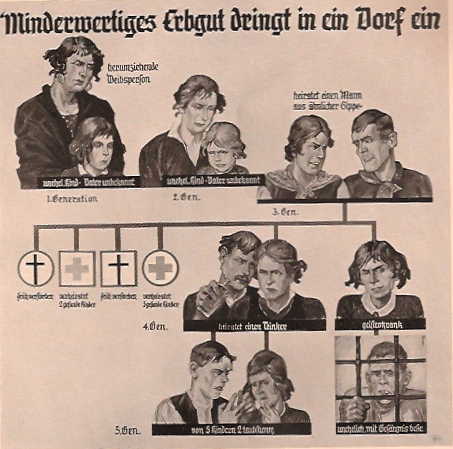The Case
After a long and thorough research, consultation with experts in the field and a tour on the ground in key historical locations in Germany, the case was chosen:
An International Criminal Law Case against Swiss-German psychiatrist Prof. Ernst Rüdin (1874-1952), considered by many historians to be one of the top scientist behind Nazi Racial Hygiene, if not the most prominent and influential of them all.

Rüdin is considered as the founding father of psychiatric genetics internationally. Since the beginning of the 20th Century, he vigorously promoted Racial Hygiene towards creating a “healthy genetic pool“ for the German race. He belonged to the group of psychiatric perpetrators who not only worked to give the Nazi exclusion and persecution policies scientific validity and authority, but also provided the regime with the infrastructure and tools to implement it.
In 1934 he wrote that “only through the political work of Adolf Hitler, and only through him has our more than thirty-year old dream become a reality: to be able to put race hygiene into action.”
His contribution to the Nazi Racial Health policies, which culminated in the mass extermination of millions in the Final Solution, cannot be overrated.
Rüdin was not only the Director of the internationally esteemed German Institute for Psychiatric Research, but also served as the president of the German Association of Neurologists and Psychiatrists. As an official government consultant on Racial Hygiene for the Nazi Ministry of Interior, Rüdin played a pivotal part in designing the “Law for the Prevention of Offspring with Hereditary Diseases” which led to the forced sterilization of 400,000 people diagnosed with mental illnesses. Later, he became deeply involved in the infamous Nazi “Euthanasia Program”, a euphemism for the systematic killing of 10,000 German children and 300,000 adult mental patients, considered “Unfit for Living“. The killing took place in specialized killing centers equipped with gas chambers and crematoria, and then expanded to mental asylums all around Germany through poisoning and starvation. This was the first mass killing the Nazi regime perpetrated, nearly two years before the Final Solution, which laid the path to the extermination camps in Chelmno, Belzec, Sobibor and Treblinka, operated by the same staff and in the same method.
As Prof. Klaus Dörner, a well known German psychiatrist, put it: “I believe I can say that Auschwitz and Treblinka would have never existed without the psychiatric killing machinery”.
Rüdin was never indicted or judged for his crimes. After his release from Allied custody he was denazified by a German court and went back to his life. He passed away in 1952 of old age — with his and other top German medical scientists’ role and involvement in the Nazi atrocities whitewashed for decades later. Only recently, through research of German historians and activists, enough documented data emerged to show the true extent and severity of his actions and their true effects.
Thus, in the 2019 Mock Trial, the international team of youth took an additional crucial step in the process of bringing to justice to the architects of genocide, finally bringing Ernst Rüdin to trial.


The Gas Chamber in
Bernburg T4 Killing Center

